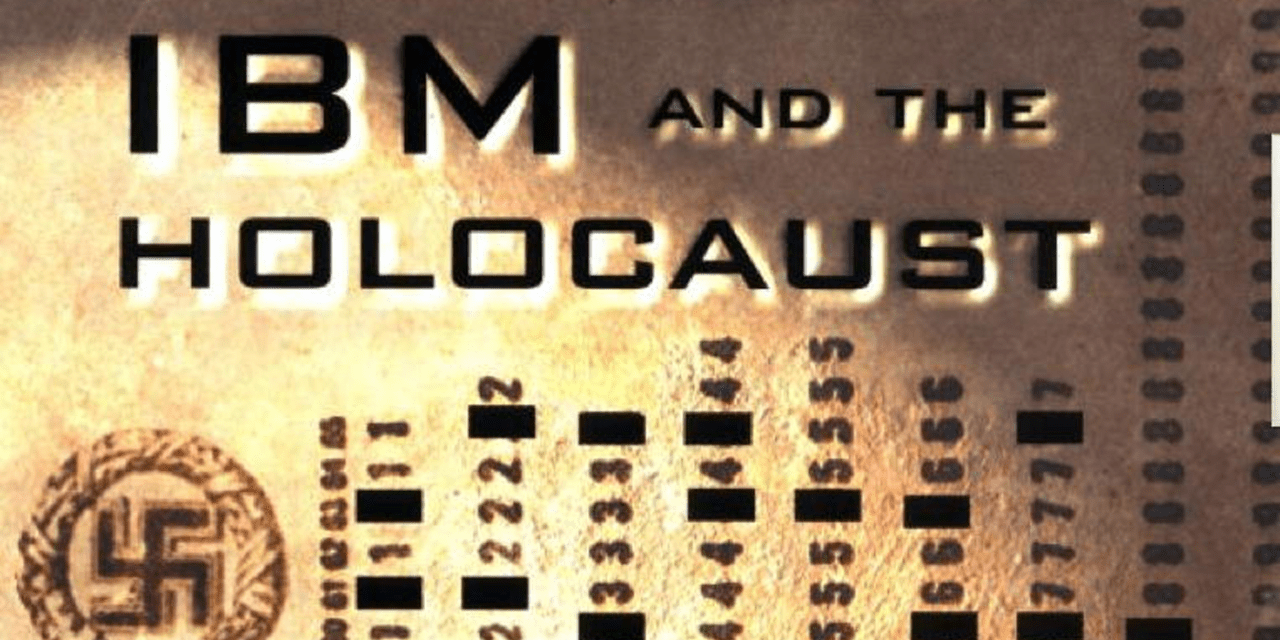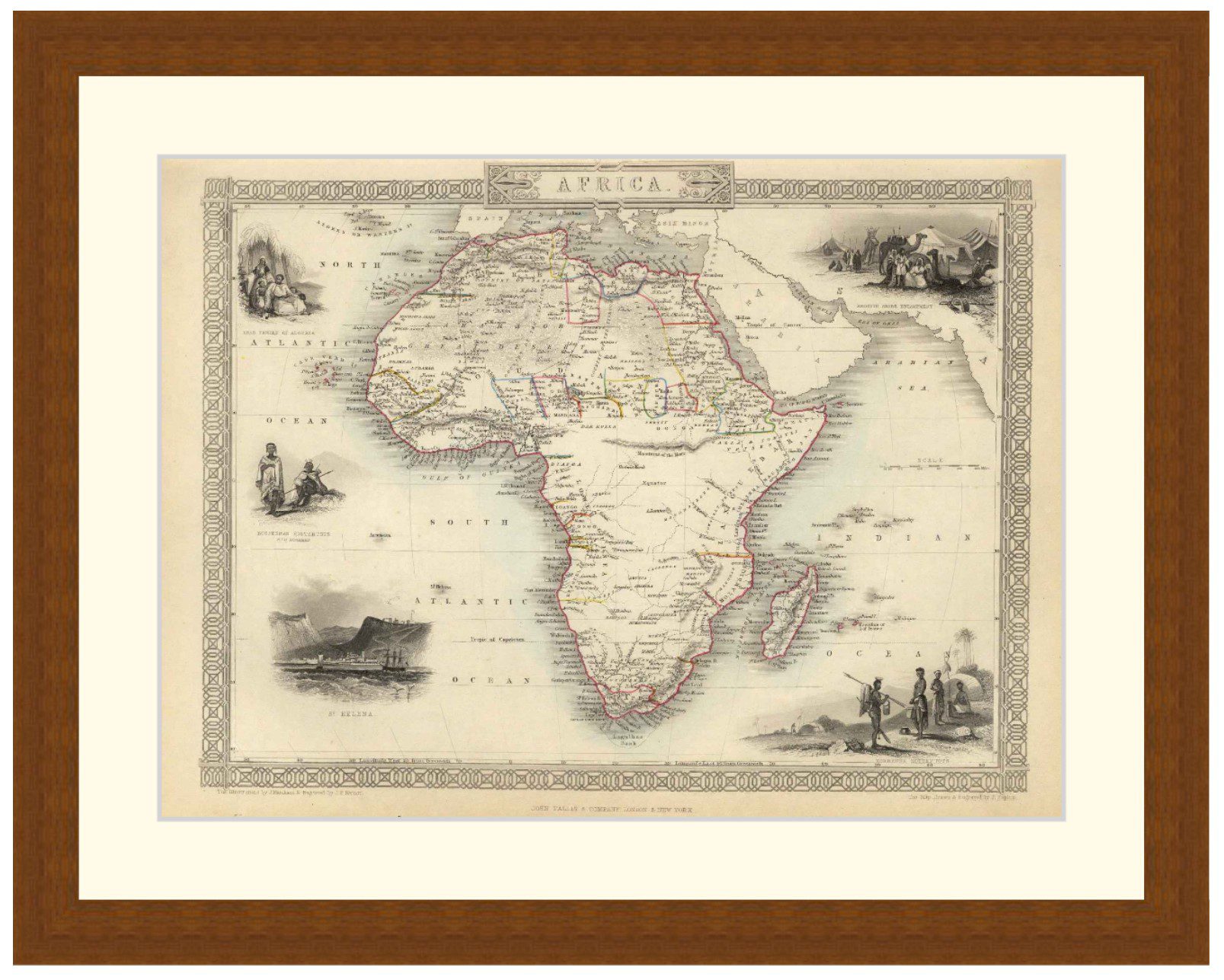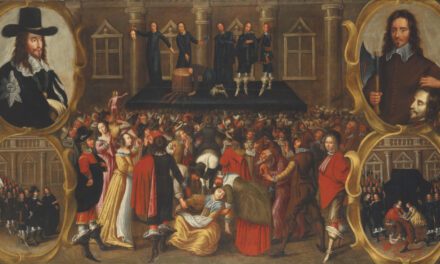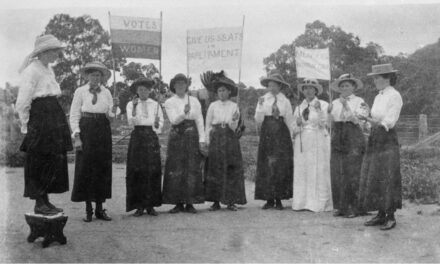Reading time: 13 minutes
By Edwin Black.
This article is drawn from Mr. Black’s updated German paperback edition published in 2002. The newer edition includes the discovery of hard evidence linking IBM to Auschwitz. The evidence, detailed here, will be appended to his English language editions at the next reprinting in the new future. Edwin Black is author of IBM and the Holocaust, The Strategic Alliance between Nazi Germany and America’s Most Powerful Corporation (Crown Publishers 2001 and Three Rivers Press 2002).
The infamous Auschwitz tattoo began as an IBM number.
In August 1943, a timber merchant from Bendzin, Poland, arrived at Auschwitz. He was among a group of 400 inmates, mostly Jews. First, a doctor examined him briefly to determine his fitness for work. His physical information was noted on a medical record. Second, his full prisoner registration was completed with all personal details. Third, his name was checked against the indices of the Political Section to see if he would be subjected to special punishment. Finally, he was registered in the Labor Assignment Office and assigned a characteristic five-digit IBM Hollerith number, 44673.
The five-digit Hollerith number was part of a custom punch card system devised by IBM to track prisoners in Nazi concentration camps, including the slave labor at Auschwitz.
The Polish timber merchant’s punch card number would follow him from labor assignment to labor assignment as Hollerith systems tracked him and his availability for work, and reported the data to the central inmate file eventually kept at Department DII. Department DII of the SS Economics Administration in Oranienburg oversaw all camp slave labor assignments, utilizing elaborate IBM systems.
Later in the summer of 1943, the Polish timber merchant’s same five-digit Hollerith number, 44673, was tattooed on his forearm. Eventually, during the summer of 1943, all non-Germans at Auschwitz were similarly tattooed.
Tattoos, however, quickly evolved at Auschwitz. Soon, they bore no further relation to Hollerith compatibility for one reason: the Hollerith number was designed to track a working inmate—not a dead one. Once the daily death rate at Auschwitz climbed, Hollerith-based numbering simply became outmoded. Soon, ad hoc numbering systems were inaugurated at Auschwitz. Various number ranges, often with letters attached, were assigned to prisoners in ascending sequence. Dr. Josef Mengele, who performed cruel experiments, tattooed his own distinct number series on “patients.” Tattoo numbering schemes ultimately took on a chaotic incongruity all its own as an internal Auschwitz-specific identification system.
However, Hollerith numbers remained the chief method Berlin employed to centrally identify and track prisoners at Auschwitz. For example, in late 1943, some 6,500 healthy, working Jews were ordered to the gas chamber by the SS. But their murder was delayed for two days as the Political Section meticulously checked each of their numbers against the Section’s own card index. The Section was under orders to temporarily reprieve any Jews with traces of Aryan parentage.
Sigismund Gajda was another Auschwitz inmate processed by the Hollerith system. Born in Kielce, Poland, Gajda was about 40 years of age when on May 18, 1943, he arrived at Auschwitz. A plain paper form, labeled”Personal Inmate Card,” listed all of Gajda’s personal information. He professed Roman Catholicism, had two children, and his work skill was marked”mechanic.” The reverse side of his Personal Inmate Card listed nine previous work assignments. Once Gajda’s card was processed by IBM equipment, a large indicia in typical Nazi Gothic script was rubber-stamped at the bottom:”Hollerith erfasst,” or”Hollerith registered.” Indeed, that designation was stamped in large letters on hundreds of thousands of processed Personal Inmate Cards at camps all across Europe.
The Extermination by Labor campaign itself depended upon specially designed IBM systems that matched worker skills and locations with labor needs across Nazi-dominated Europe. Once the prisoner was too exhausted to work, he was murdered by gas or bullet. Exterminated prisoners were coded “six” in the IBM system.
The Polish timber merchant’s Hollerith tattoo, Sigismund Gajda’s inmate form, and the victimization of millions more at Auschwitz live on as dark icons of IBM’s conscious 12-year business alliance with Nazi Germany. IBM’s custom-designed prisoner-tracking Hollerith punch card equipment allowed the Nazis to efficiently manage the hundreds of concentration camps and sub-camps throughout Europe, as well as the millions who passed through them. Auschwitz’ camp code in the IBM tabulation system was 001.8
Nearly every Nazi concentration camp operated a Hollerith Department known as the Hollerith Abteilung. The three-part Hollerith system of paper forms, punch cards and processing machines varied from camp to camp and from year to year, depending upon conditions.
In some camps, such as Dachau and Storkow, as many as two dozen IBM sorters, tabulators, and printers were installed. Other facilities operated punchers only and submitted their cards to central locations such as Mauthausen or Berlin. In some camps, such as Stuthoff, the plain paper forms were coded and processed elsewhere. Hollerith activity, whether paper, punching or processing, was frequently—but not always–located within the camp itself, consigned to a special bureau called the Labor Assignment Office, known in German as the Arbeitseinsatz. The Arbeitseinsatz issued the all-important life-sustaining daily work assignments, and processed all inmate cards and labor transfer rosters.
IBM did not sell any of its punch card machines to Nazi Germany. The equipment was leased by the month. Each month, often more frequently, authorized repairmen, working directly for or trained by IBM, serviced the machines on-site–whether in the middle of Berlin or at a concentration camp. In addition, all spare parts were supplied by IBM factories located throughout Europe. Of course, the billions of punch cards continually devoured by the machines, available exclusively from IBM, were extra.
IBM’s extensive technological support for Hitler’s conquest of Europe and genocide against the Jews was extensively documented in my book, IBM and the Holocaust, published in February 2001 and updated in a paperback edition. In March of this year, The Village Voice broke exclusive new details of a special IBM wartime subsidiary set up in Poland by IBM’s New York headquarters shortly after Hitler’s 1939 invasion. In 1939, America had not entered the war, and it was still legal to trade with Nazi Germany. IBM’s new Polish subsidiary, Watson Business Machines, helped Germany automate the rape of Poland. The subsidiary was named for its president Thomas J. Watson.
Central to the Nazi effort was a massive 500-man Hollerith Gruppe, installed in a looming brown building at 24 Murnerstrasse in Krakow. The Hollerith Gruppe of the Nazi Statistical Office crunched all the numbers of plunder and genocide that allowed the Nazis to systematically starve the Jews, meter them out of the ghettos and then transport them to either work camps or death camps.
The trains running to Auschwitz were tracked by a special guarded IBM customer site facility at 22 Pawia in Krakow. The millions of punch cards the Nazis in Poland required were obtained exclusively from IBM, including one company print shop at 6 Rymarska Street across the street from the Warsaw Ghetto. The entire Polish subsidiary was overseen by an IBM administrative facility at 24 Kreuz in Warsaw.
The exact address and equipment arrays of the key IBM offices and customer sites in Nazi-occupied Poland have been discovered. But no one has ever been able to locate an IBM facility at, or even near, Auschwitz. Until now. Auschwitz chief archivist Piotr Setkiewicz finally pinpointed the first such IBM customer site.
The newly unearthed IBM customer site was a huge Hollerith Büro. It was situated in the I.G. Farben factory complex, housed in Barracks 18, next to German Civil Worker Camp 7, about two kilometers from Auschwitz III, also known as Monowitz Concentration Camp.
Auschwitz’ Setkiewicz explains,”The Hollerith office at IG Farben in Monowitz used the IBM machines as a system of computerization of civil and slave labor resources. This gave Farben the opportunity to identify people with certain skills, primarily skills needed for the construction of certain buildings in Monowitz.”
By way of background, what most people call”Auschwitz” was actually a sprawling hell comprised of three concentration camps, surrounded by some 40 subcamps, numerous factories and a collection of farms in a surrounding captive commercial zone. The original Auschwitz became known simply as Auschwitz I, and functioned as a diversified camp for transit, labor and detention. Auschwitz II, also called Birkenau, became the infamous extermination center, operating gas chambers and ovens. Nearby Auschwitz III, known as Monowitz, existed primarily as a slave labor camp. Monowitz is where IBM’s bustling customer site functioned.
Many of the long-known paper prisoner forms stamped Hollerith Erfasst, or”registered by Hollerith,” indicated the prisoners were from Auschwitz III, that is, Monowitz. Now Auschwitz archivist Setkiewicz has also discovered about 100 Hollerith machine summary printouts of Monowitz prisoner assignments and details generated by the I.G. Farben customer site.
For example, Alexander Kuciel, born August 12, 1889, was in 1944 deployed as a slave carpenter, skill coded 0149, and his Hollerith printout is marked “Sch/P,” the Reich abbreviation for Schutzhäftling/Pole. Schutzhäftling/Pole means”Polish political prisoner.”
The giant Farben facilities, also known as”I.G. Werk Auschwitz,” maintained two Hollerith Büro staff contacts, Herr Hirsch and Herr Husch. One key man running the card index systems was Eduard Müller. Müller was a fat, aging, ill-kempt man, with brown hair and brown eyes. Some said, “He stank like a polecat.” A rabid Nazi, Müller took special delight in harming inmates from his all-important position in camp administration.
Comparison of the new printouts to other typical camp cards shows the Monowitz systems were customized for the specific coding Farben needed to process the thousands of slave workers who labored and died there. The machines were probably also used to manage and develop manufacturing processes and ordinary business applications. The machines almost certainly did not maintain extermination totals, which were calculated as”evacuations” by the Hollerith Gruppe in Krakow. At press time, the diverse Farben codes and range of machine uses are still being studied.
It is not known how many additional IBM customer sites researchers will discover in the cold ashes of the expansive commercial Auschwitz zone.
A Hollerith Büro, such as the one at Auschwitz III, was larger than a typical mechanized concentration camp Hollerith Department. A Büro was generally comprised of more than a dozen punching machines, a sorter and one tabulator. Leon Krzemieniecki was a compulsory worker who operated a tabulator at the IBM customer site at the Polish railways office in Krakow that kept track of trains going to and from Auschwitz. He recalls,”I know that trains were constantly going from Krakow to Auschwitz–not only passenger trains, but cargo trains as well.” Krzemieniecki, who worked for two years with IBM punchers, card sorters and tabulators, estimates that a punch card operation for so large a manufacturing complex as Farben”would probably require at least two high-speed tabulators, four sorters, and perhaps 20 punchers.” He added,”The whole thing would probably require 30-40 persons, plus their German supervisors.”
The new revelation of IBM technology in the Auschwitz area constitutes the final link in the chain of documentation surrounding Big Blue’s vast enterprise in Nazi-occupied Poland, supervised at first directly from its New York headquarters, and later through its Geneva office. Jewish leaders and human rights activists were again outraged.”This latest disclosure removes any pretext of deniability and completes the puzzle that has been put together about IBM in Poland,” declared Malcolm Hoenlein, vice president of the New York-based Conference of Presidents of Major Jewish Organizations.”The picture that emerges is most disturbing,” added Hoenlein.”IBM must confront this matter honestly if there is to be any closure.”
Marek Orski, state historian of the museum at Poland’s Stuthoff Concentration Camp, has distinguished himself as that country’s leading expert on the use of IBM technology at Polish concentration camps.”This latest information,” asserts Orski,”proves once more that IBM’s Hollerith machines in occupied Poland were functioning in the area of yet another concentration camp, in this case Auschwitz-Monowitz–something completely unknown until now. It is yet another significant revelation in what has become the undoubted fact of IBM’s involvement in Poland. Now we need to compile more documents identifying the exact activity of this Hollerith Büro in Auschwitz Monowitz.”
Krzemieniecki is convinced obtaining such documents would be difficult.”It would be great to have access to those documents,” he said,”but where are they?” He added,”Please remember, I witnessed in 1944, when the war front came closer to Poland, that all the IBM machines in Krakow were removed. I’m sure the Farben machines were being moved at the same time. Plus, the Germans were busy destroying all the records. Even still,” he continues,”what has been revealed thus far is a great achievement.”
Auschwitz historians were originally convinced that there were no machines at Auschwitz, that all the prisoner documents were processed at a remote location, primarily because they could find no trace of the equipment in the area. They even speculated that the stamped forms from Auschwitz III were actually punched at the massive Hollerith service at Mauthausen concentration camp. Indeed, even the Farben Hollerith documents had been identified some time ago at Auschwitz, but were not understood as IBM printouts. That is, not until the Hollerith Büro itself was discovered. Archivists only found the Büro because it was listed in the I.G. Werk Auschwitz phone book on page 50. The phone extension was 4496.”I was looking for something else,” recalls Auschwitz’ Setkiewicz,”and there it was.” Once the printouts were reexamined in the light of IBM punch card revelations, the connection became clear.
Setkiewicz says,”We still need to find more similar identification cards and printouts, and try to find just how extensive was the usage in the whole I.G. Farben administration and employment of workers. But no one among historians has had success in finding these documents.”
In the current climate of intense public scrutiny of corporate subsidiaries, IBM’s evasive response has aroused a renewed demand for accountability.”In the day of Enron and Tyco,” says Robert Urekew, a University of Louisville professor of business ethics,”we now know these are not impersonal entities. They are directed by people with names and faces.” Prof. Urekew, who has studied IBM’s Hitler-era activities, continued,”The news that IBM machines were at Auschwitz is just the latest smoking gun. For IBM to continue to stonewall and hinder access to its New York archives flies in the face of the focus on accountability in business ethics today. Since the United States was not technically at war with Nazi Germany in 1939, it may have been legal for IBM to do business with the Third Reich and its camps in Poland. But was it moral?”
Even some IBM employees are frustrated by IBM’s silence. Michael Zamczyk, for example, is a long-time IBM employee in San Jose, California, working on business controls. A loyal IBMer, Zamczyk has worked for the company for some 28 years. He is also probably the only IBM employee who survived the Krakow ghetto in 1941 and 1942. Since revelations about IBM’s ties to Hitler exploded into public view in February 2001, Zamczyk has been demanding answers—and an apology–from IBM senior management.
“Originally,” says Zamczyk,”I was just trying to determine if it was IBM equipment that helped select my father to be shipped to Auschwitz, and if the machines were used to schedule the trains to Auschwitz.”
Zamczyk started writing letters and emails, but to no avail. He could not get any concrete response about IBM’s activities during the Hitler era.”I contacted senior management, all the way up to the president, trying to get an answer,”states Zamczyk.”Since then, I have read the facts about IBM in Poland, about the railroad department at 22 Pawia Street in Krakow, and I read about the eyewitnesses. Now I feel that IBM owes me, as an IBM employee, an apology. And that is all I am looking for.”
Zamczyk was met by stony silence from IBM executives.”The only response I got,” he relates,”was basically telling me there would be no public or private apology. But I am still waiting for that apology and debating what to do next.”
Repeated attempts to obtain IBM reaction to the newest disclosure were rebuffed by IBM spokesman Carol Makovich. I phoned her more than a dozen times, but she did not respond, or grant me permission to examine Polish, Brazilian and French subsidiary documents at the company’s Somers, New York archives. Nor has the company been forthcoming to numerous Jewish leaders, consumers and members of the media who have demanded answers.
At one point, Makovich quipped to a Reuters correspondent,”We are a technology company, we are not historians.”
This article was originally published by The History News Network.
Podcast interview with the author Edwin Black:
Articles you may also like:

Free France was African: the Story of France’s African Soldiers in WW2
Reading time: 15 minutes
From a humble, precarious exile in London, Free France patched together from soldiers and sailors of the scattered French military under the leadership of General Charles de Gaulle. One of the most storied resistance movements in World War II, far-flung Frenchmen swelled in number until hundreds of thousands could return to liberate France in 1944.

Brilliant and Flawed: The Enduring Legacy of Napoleon Bonaparte
The 200th anniversary of his death (1821-2021) renews discussion on how the former Emperor should be commemorated. By Michael Vecchio Military genius. Autocratic despot. Progressive visionary. Bloodthirsty war monger. The contrasting list of terms to describe the legacy of Napoleon Bonaparte indicate just how polarizing of a figure the former French Emperor was not only […]

Weekly History Quiz No.219
When was the Australian-England ‘Bodyline’ cricket series?
Try the full 10 question quiz.
The text of this article is republished from HNN in accordance with their republishing policy.








